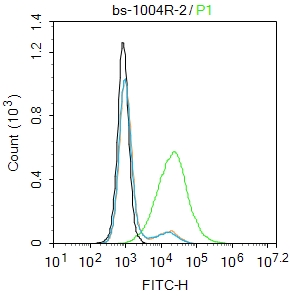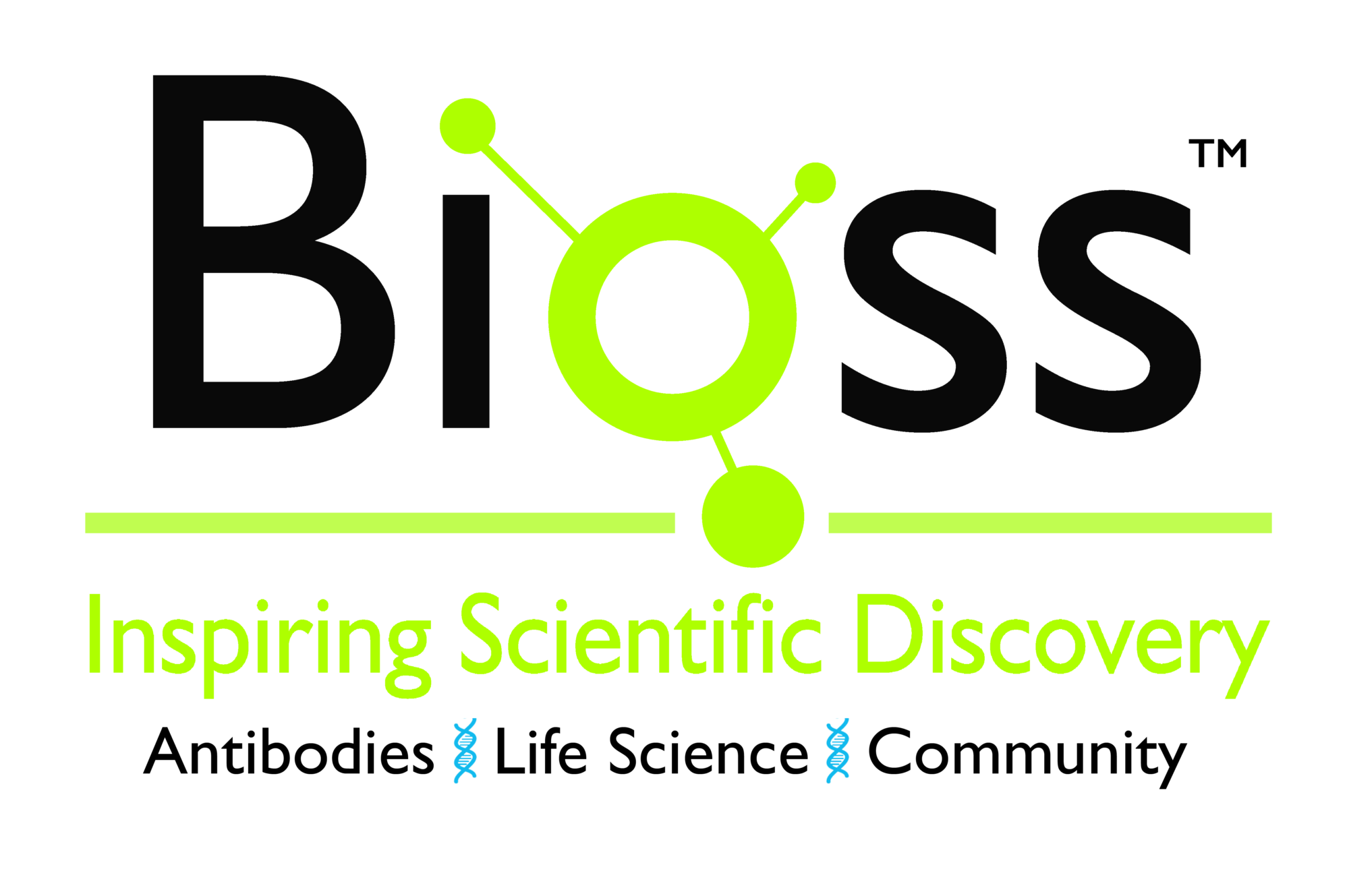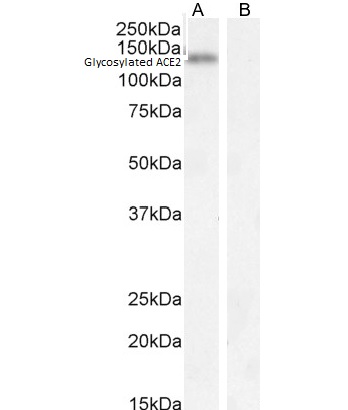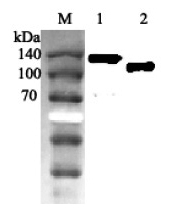ACE2 antibody [N1N2], N-term
GTX101395
ApplicationsFlow Cytometry, ImmunoFluorescence, Western Blot, ELISA, ImmunoCytoChemistry, ImmunoHistoChemistry, ImmunoHistoChemistry Paraffin
Product group Antibodies
ReactivityHuman, Monkey, Mouse, Rat
TargetACE2
Overview
- SupplierGeneTex
- Product NameACE2 antibody [N1N2], N-term
- Delivery Days Customer9
- Application Supplier NoteWB: 1:500-1:3000. IHC-P: 1:100-1:1000. *Optimal dilutions/concentrations should be determined by the researcher.Not tested in other applications.
- ApplicationsFlow Cytometry, ImmunoFluorescence, Western Blot, ELISA, ImmunoCytoChemistry, ImmunoHistoChemistry, ImmunoHistoChemistry Paraffin
- CertificationResearch Use Only
- ClonalityPolyclonal
- Concentration0.2 mg/ml
- ConjugateUnconjugated
- Gene ID59272
- Target nameACE2
- Target descriptionangiotensin converting enzyme 2
- Target synonymsACEH, angiotensin-converting enzyme 2, ACE-related carboxypeptidase, angiotensin I converting enzyme (peptidyl-dipeptidase A) 2, angiotensin I converting enzyme 2, angiotensin-converting enzyme homolog, angiotensin-converting enzyme-related carboxypeptidase, metalloprotease MPROT15, peptidyl-dipeptidase A
- HostRabbit
- IsotypeIgG
- Protein IDQ9BYF1
- Protein NameAngiotensin-converting enzyme 2
- Scientific DescriptionThe protein encoded by this gene belongs to the angiotensin-converting enzyme family of dipeptidyl carboxydipeptidases and has considerable homology to human angiotensin 1 converting enzyme. This secreted protein catalyzes the cleavage of angiotensin I into angiotensin 1-9, and angiotensin II into the vasodilator angiotensin 1-7. The organ- and cell-specific expression of this gene suggests that it may play a role in the regulation of cardiovascular and renal function, as well as fertility. In addition, the encoded protein is a functional receptor for the spike glycoprotein of the human coronaviruses SARS and HCoV-NL63. [provided by RefSeq]
- ReactivityHuman, Monkey, Mouse, Rat
- Storage Instruction-20°C or -80°C,2°C to 8°C
- UNSPSC12352203
References
- Escalera A, Laporte M, Turner S, et al. The impact of S2 mutations on Omicron SARS-CoV-2 cell surface expression and fusogenicity. Emerg Microbes Infect. 2024,13(1):2297553. doi: 10.1080/22221751.2023.2297553Read this paper
- Chen YR, Jiang WP, Deng JS, et al. Anisomeles indica Extracts and Their Constituents Suppress the Protein Expression of ACE2 and TMPRSS2 In Vivo and In Vitro. Int J Mol Sci. 2023,24(20). doi: 10.3390/ijms242015062Read this paper
- Resnick JD, Wilson JL, Anaya E, et al. Growth media affects susceptibility of air-lifted human nasal epithelial cell cultures to SARS-CoV2, but not Influenza A, virus infection. bioRxiv. 2023,:pii: 2023.07.31.551381. doi: 10.1101/2023.07.31.551381.Read this paper
- Sun TK, Huang WC, Sun YW, et al. Schizophyllum commune Reduces Expression of the SARS-CoV-2 Receptors ACE2 and TMPRSS2. Int J Mol Sci. 2022,23(23). doi: 10.3390/ijms232314766Read this paper
- Isobe A, Arai Y, Kuroda D, et al. ACE2 N-glycosylation modulates interactions with SARS-CoV-2 spike protein in a site-specific manner. Commun Biol. 2022,5(1):1188. doi: 10.1038/s42003-022-04170-6Read this paper
- Chien LH, Deng JS, Jiang WP, et al. Study on the potential of Sanghuangporus sanghuang and its components as COVID-19 spike protein receptor binding domain inhibitors. Biomed Pharmacother. 2022,153:113434. doi: 10.1016/j.biopha.2022.113434Read this paper
- Wang WJ, Chen Y, Su WC, et al. Peimine inhibits variants of SARS-CoV-2 cell entry via blocking the interaction between viral spike protein and ACE2. J Food Biochem. 2022,46(10):e14354. doi: 10.1111/jfbc.14354Read this paper
- Nguyen HT, Kawahara M, Vuong CK, et al. SARS-CoV-2 M Protein Facilitates Malignant Transformation of Breast Cancer Cells. Front Oncol. 2022,12:923467. doi: 10.3389/fonc.2022.923467Read this paper
- Yeh H, Vo DNK, Lin ZH, et al. GMI, a protein from Ganoderma microsporum, induces ACE2 degradation to alleviate infection of SARS-CoV-2 Spike-pseudotyped virus. Phytomedicine. 2022,103:154215. doi: 10.1016/j.phymed.2022.154215Read this paper
- Lin EC, Hong CH. IL-33 Enhances ACE2 Expression on Epidermal Keratinocytes in Atopic Dermatitis: A Plausible Issue for SARS-CoV-2 Transmission in Inflamed Atopic Skin. Biomedicines. 2022,10(5). doi: 10.3390/biomedicines10051183Read this paper







